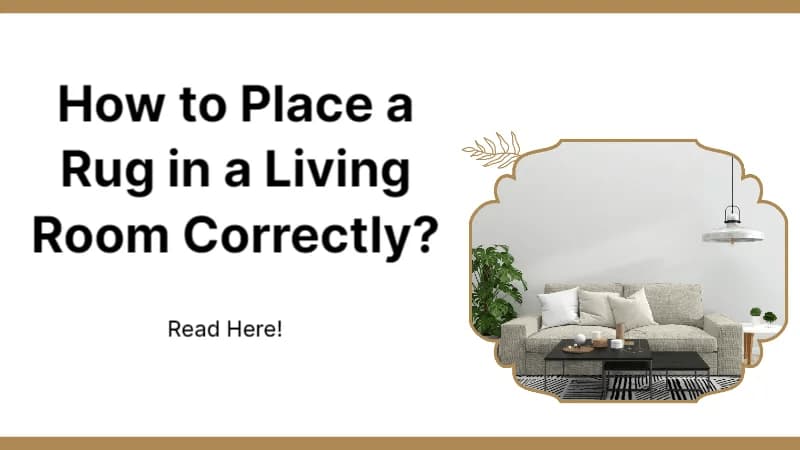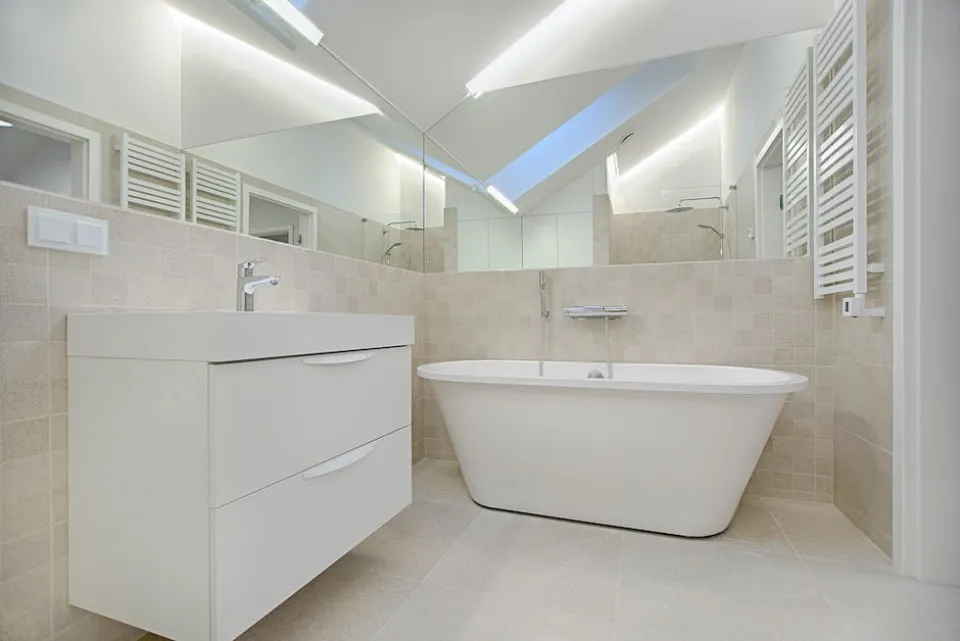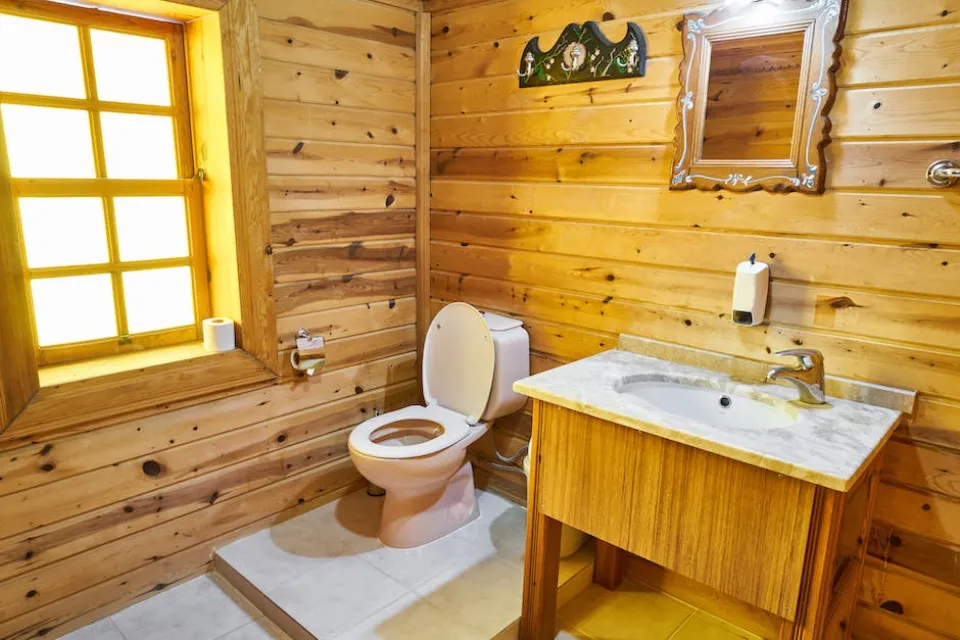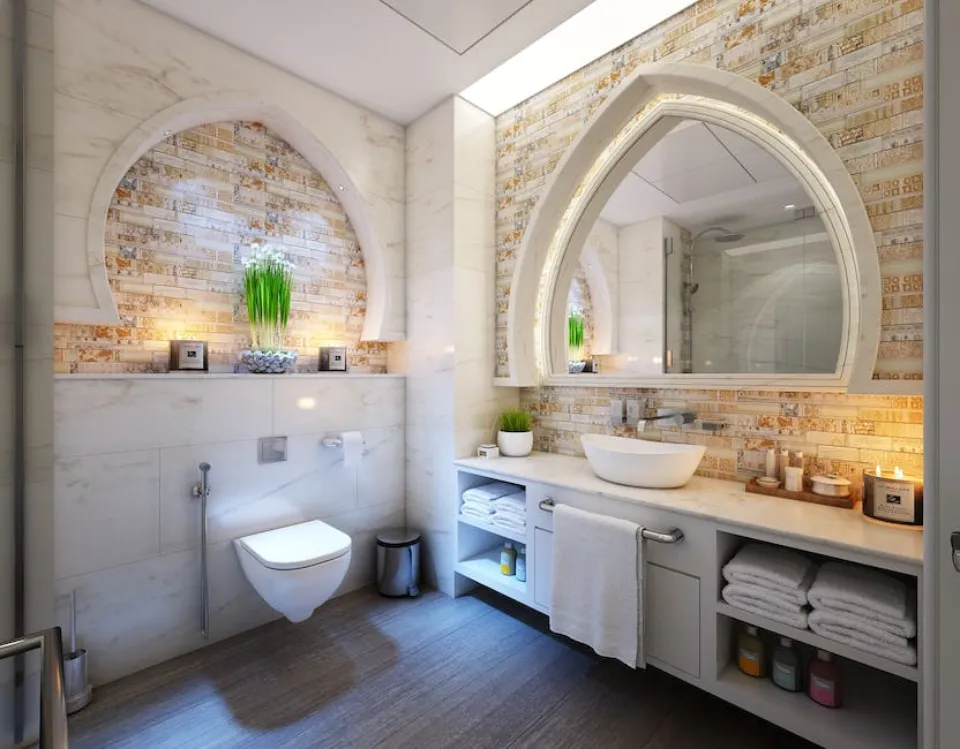A rug can really tie your living room together, whether you’re redecorating it entirely or just a little. So, how to place a rug in a living room?
Different sizes of living rooms will have different tips to place a rug. Besides, Size & Timing, Flooring, and Shape & Texture will also influence the rug placement.
Read on.
How to Place a Rug in a Living Room?
In the living room, placing a rug gets a little trickier, but it still all depends on the size of your space and your plans for laying out your furniture. You have three main options for living rooms of various sizes:
For Smaller Living Rooms
You have two options: You can go with a smaller rug (like a 5′ by 8′) that can float in the room in between the furniture, but under the coffee table says Loloi (“A rug that anchors your space well and leaves walking space around the furniture sits six to twelve inches in front of the sofa.”) or if you’re trying to make your space feel bigger, you’ll actually want a bigger rug that fits all furniture (like in the larger room section below) to unify the space.
For Mid-sized Rooms
Use a larger rug, such as one that is 8 by 10 feet, and place your large, anchor pieces of furniture, such as a. the sofa) around so that only the front legs are on top of it. You’ll also want the rug to extend past the sofa’s sides, according to Loloi.
For Larger Rooms
I suggest getting a bigger rug (like a 9′ by 13′) and using it to frame your space. Place all of the furniture on the rug after that. “Just be sure there is still room around the outside of the rug for walking, so you aren’t partially on and off the rug,” Alternately, Loloi advises, use different rugs to define each of these spaces if you’re attempting to segment the room into distinct areas (such as various seating arrangements or an open concept with dining and seating areas).
The same placemental principles apply even if the suggested rug sizes above don’t quite fit the dimensions of your home. You can still buy a rug based on the size of your living room and your furniture.

Tips for Placing a Rug in a Living Room
There are a few considerations to make when choosing a rug for your living room, but you don’t necessarily need to hire an interior designer. The following advice should help you find the ideal fit because, in the end, you will know your own home better than anyone.
Size & Timing
- Size
When we discuss size, we are referring to the dimensions of the room and the rug. These naturally have a synergistic effect on one another. Being exact will pay off in the end, so keep a measuring tape close at hand.
Although you can choose any size for a rug, there are a few guidelines that should help you find a good balance. As a general rule, the rug should be wider than the sofa if it will be in front of the couch. Rugs that are narrower can throw off the proportions of the room and tend to sit awkwardly with the furniture. Generally, look to larger area rugs – if you can plant your feet while you’re on the sofa (or any furniture, for that matter), then you’ve found a good size.
The flipside of this is an oversized rug. An oddly shaped room will result if your rug is too close to the walls. You want your rug to sit comfortably within the room but not dominate and cover it wall-to-wall. Aim to leave space for breathing throughout your room after taking careful measurements.
- Timing
This refers to the positioning of your rugs within the space. You might want to base your entire design scheme for your living room around a rug if you’re starting from scratch. A rug can be a real focal point, and in this way, it can influence the design of your room. For instance, an eye-catching rug with a pattern could serve as the starting point for a more extensive color scheme.
However, you frequently reach the rug after the majority of the room’s design has been completed. In this situation, match the rug to the colors and textures of the paintings, curtains, and upholstered furniture in the room.

Flooring
The type and colour of your flooring will certainly help determine your ideal rug. Dark timber flooring tends to fare well with deeper and richer colours, while light timbers, stone and pale tiles all benefit from neutral shades like cream and charcoal.
Rugs can also be useful for patterned tiles, terrazzo, and other striking patterns, but use caution. Patterned rugs can conflict with these patterns, so it’s best to keep it simple with something like the blue Jocasta.
Rugs can be useful for carpet as well. A rug over the carpet can bring new life to a room, with patterned rugs working well over plain carpeting. Rugs on carpet also impart a feeling of warmth and luxury. Avoid a rug over deep shag pile carpeting, but otherwise follow the same advice as to other types of flooring.
Shape & Texture
- Shape
A rug typically has four sides, which can be either square or rectangle-shaped. The room has a formality to it thanks to the consistency of shape, which complements the straight edges of the sofas, tables, and sideboards well. These rug designs are the most accommodating, and they will still look great even if the sizing is off.
Round rugs are a great way to complement a round table, whether it’s a coffee table in the lounge or a dining table. When used in a large area, a round rug can give the room a center or focus while also muting sharp angles and lines. These look their best as smaller area rugs.
Hide rugs have irregular shapes, but that can be their appeal. They can add a playful element to rooms with very formal designs, such as those with lots of straight lines. In open areas where a more traditional rug shape might not work, take into account these.
- Texture
Rugs come in a wide range of textures, with plenty of room in the middle, from flat and coarse to deep and plush. Stronger textures may be preferred in crowded spaces and areas near the outdoors. Pet-friendly rugs, kids rugs and cowhide rugs are easier to maintain in the face of heavy traffic or exposure to mess. The same goes for outdoor rugs, where the weather is likely to factor in. You will recognize the distinction when vacuuming.
On the other hand, those looking to soften the harshness of stone, timber or tiled floors might appreciate the texture provided by woven rugs. These produce a pleasing contrast to the touch and the eye.
Read about How to Choose Curtains for Living Rooms?
Rug Sizes
The size of your rug really depends on the size of your living room and your seating.
The most common area rug sizes are 5′ x 8′, 8′ x 10′, and 9′ x 12′, with most living rooms best suited to at least an 8′ x 10′ rug.
Have large pieces of furniture but don’t want to line your sectional or sofa against the wall?
Overstock suggests orienting your rug with the shape of the room to create some visual flow.
Additionally, you need at least a foot on either side of your sofa to surround your rug in an equal amount on all sides.
Anywhere from 8 to 24 inches of exposed flooring between the outer edges of the rug and wall is ideal.
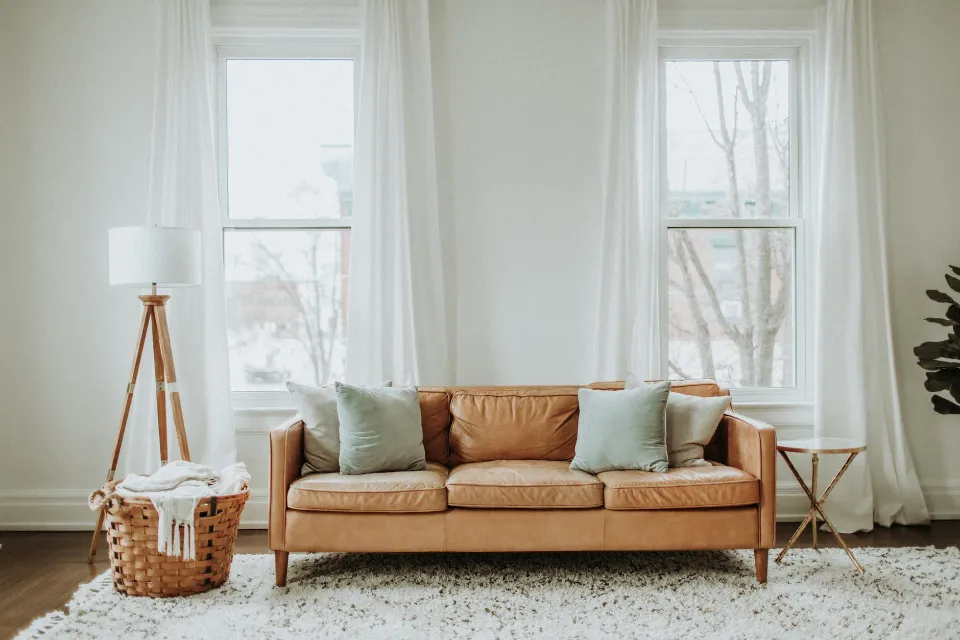
Why Should You Place a Rug in a Living Room?
You will understand the importance of a rug if you have ever walked on chilly floorboards or tiles in the winter. However, rugs also have an often-overlooked aesthetic that can add flair or cohesion to the design of a room. As important to the overall appearance and feel of a space as any piece of furniture, a well-placed, carefully chosen rug can be.
